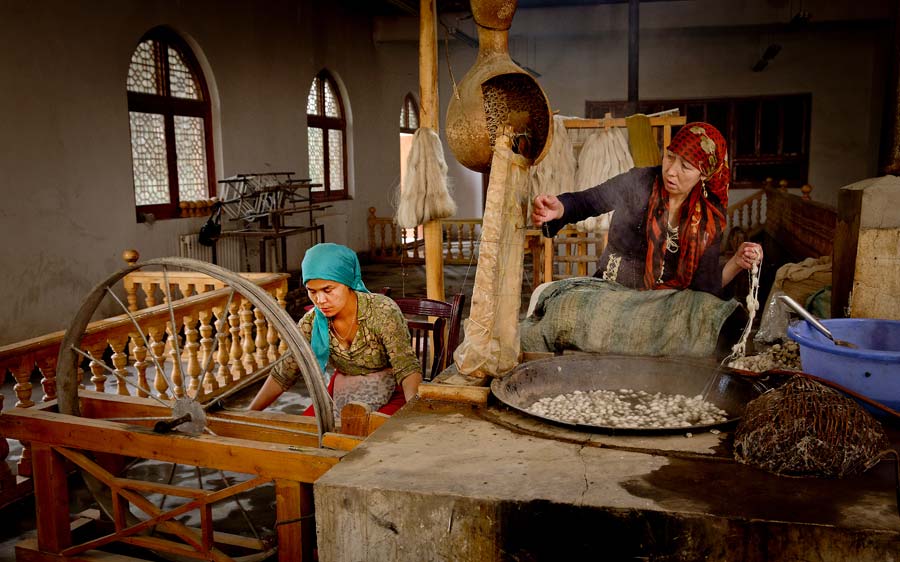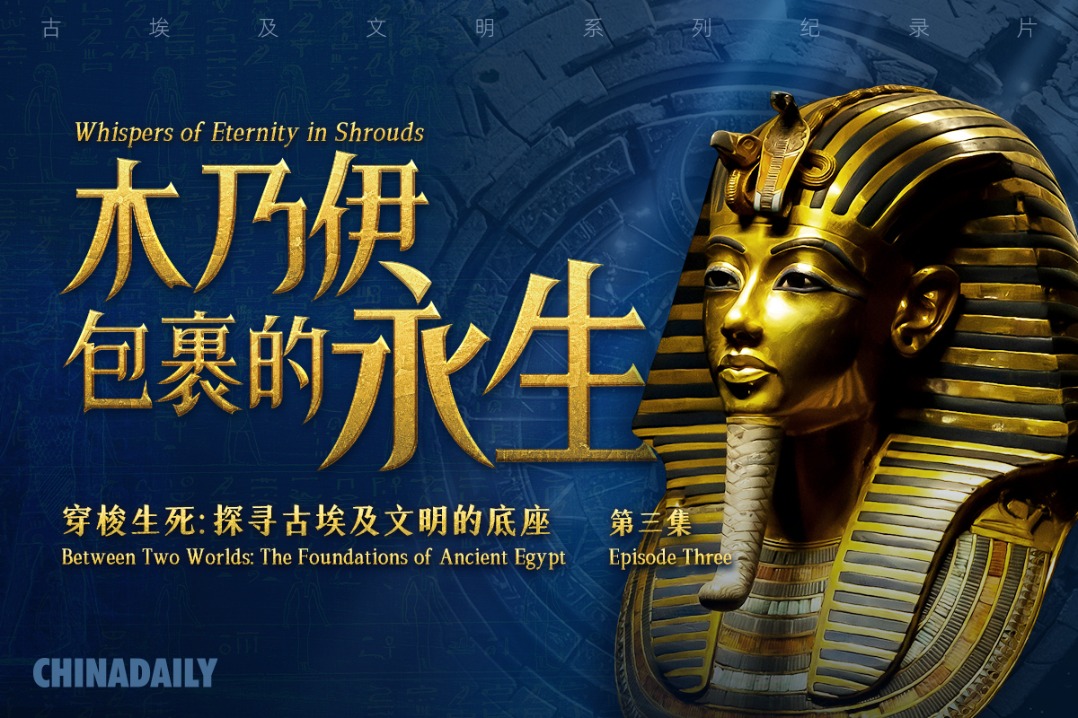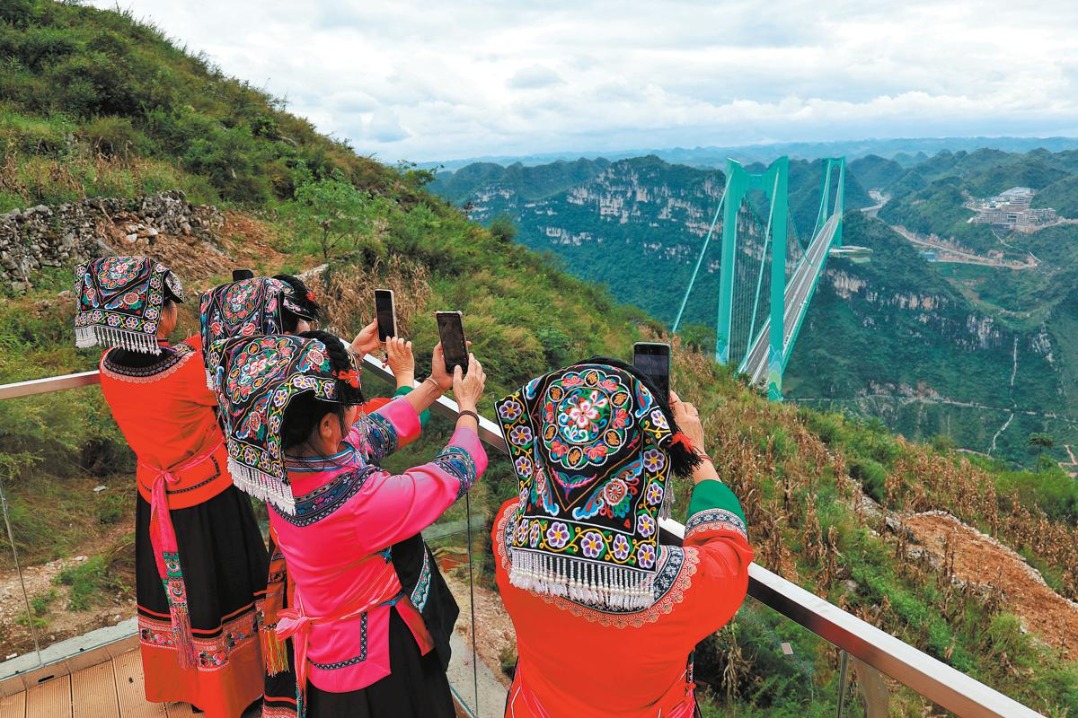Xinjiang: A living tapestry of intangible cultural heritage


Atlas silk weaving and dyeing
Atlas silk, meaning "graceful" in the Uyghur language, is a millennium-old craft renowned for its softness, lightness and brilliant colors. Listed as China's National Intangible Cultural Heritage in 2018, it is hailed as "the last silk-making handicraft of the 21st century" and "a living fossil along the Silk Road".
Using the traditional ikat technique, artisans tie and dye warp threads before weaving, creating flowing, blurred motifs such as pomegranates, almonds, ram's horns, the rawap lute and hand drums—symbols of Xinjiang's multicultural heritage.
Traditional Atlas silk typically features four main shades—black, red, yellow and multi-color—while modern artisans continue to innovate with expanded palettes.
Minerals like alum, indigo and natural plant extracts like walnut skin, jujube skin, and tamarisk are used to create the dyes.
Today, Atlas silk is reimagined in fashion, cultural products and footwear, breathing new vitality into this timeless art.
























